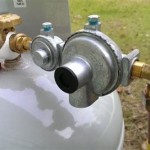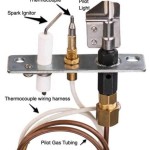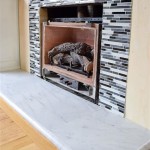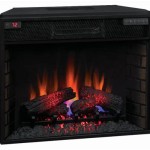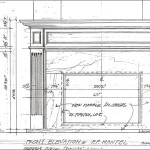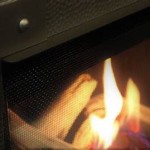Fireplace With Hearth: A Comprehensive Guide
A fireplace with a hearth is a timeless and captivating feature in any home. The hearth, a non-combustible floor area in front of the fireplace, adds both functionality and aesthetic appeal. This article delves into the components of a fireplace with a hearth, its benefits, and considerations for installation and maintenance.
Components of a Fireplace with Hearth
A fireplace with a hearth comprises several key components:
- Firebox: The firebox is the enclosed space where the fire burns. It is typically constructed of brick, stone, or metal and includes a fire grate for holding the fuel.
- Hearth: The hearth is a non-combustible floor area extending out from the fireplace opening. It serves as a protective barrier against sparks and embers, providing a safe space for furniture and accessories.
- Mantel: The mantel is an optional decorative shelf that sits above the fireplace opening. It provides a platform for displaying artwork, candles, or other items.
- Damper: The damper is a metal flap located within the chimney that controls airflow. When open, it allows smoke and gases to escape; when closed, it prevents cold air from entering the home.
- Chimney: The chimney is a vertical structure that carries smoke and gases from the firebox to the outside. It is typically constructed of brick, stone, or metal and must be properly designed and installed to ensure safe and efficient operation.
Benefits of a Fireplace With Hearth
Fireplaces with hearths offer numerous benefits, enhancing both the aesthetic and functional aspects of a home.
Aesthetic Appeal
A fireplace with a hearth adds warmth, character, and a sense of coziness to a room. The combination of firelight and the natural materials used in construction creates a welcoming and inviting ambiance. The hearth itself can be designed in various styles, from traditional to modern, complementing any décor.
Functional Use
The hearth provides a safe and practical surface for activities such as:
- Heating: Fireplaces can provide supplemental heating, particularly in rooms where central heating is less effective.
- Cooking: Traditional open-hearth fireplaces were used for cooking, and modern variations still allow for roasting and grilling.
- Gathering: The hearth serves as a focal point for family and friends to gather around, creating a sense of community and connection.
Considerations for Installation and Maintenance
Installing and maintaining a fireplace with a hearth requires careful planning and attention to detail.
Installation
The installation process involves several crucial steps, including:
- Planning and Design: Determine the size, location, and style of the fireplace, considering the existing structure and aesthetic preferences.
- Code Compliance: Ensure that the installation meets local building codes and safety regulations. Consult with a qualified contractor for guidance.
- Chimney Construction: The chimney must be properly designed and constructed to ensure safe and efficient operation. Hire a certified chimney sweep for inspection and maintenance.
Maintenance
Regular maintenance is essential to keep your fireplace functioning safely and efficiently. This includes:
- Cleaning the Firebox: Remove ash and debris from the firebox after each use to prevent buildup and potential hazards.
- Inspecting the Chimney: Have the chimney inspected annually by a certified chimney sweep to identify any cracks, blockages, or other issues that could compromise safety.
- Checking the Damper: Ensure that the damper opens and closes smoothly and completely. A malfunctioning damper can lead to smoke and carbon monoxide buildup.
A fireplace with a hearth adds warmth, character, and a touch of history to any home. By understanding its components, benefits, and considerations for installation and maintenance, you can enjoy its unique charm and benefits for years to come.

What Is A Fireplace Hearth Detailed Guide To Hearths

ᑕ❶ᑐ What Is A Fireplace Hearth And Its Purpose

Guide To The Right Fireplace Hearth Direct Fireplaces

Hearth Stone For Fireplace Bring Home The Comfort

Guide To Stone Fireplace With Porcelain Hearth

Vanbrugh Fireplace Without Mid Mantel No Slip Rebates Including Hearth Haddonstone Usa

Heat Glo Royal Hearth Wood Fireplace Fireside Home

9 Indoor Fireplaces That Will Bring Warmth And Charm To Your Home Swenson Granite 100 Natural Stones

Tall Manor Fireplace Including Hearth Haddonstone Usa

Dk Studio
Related Posts

